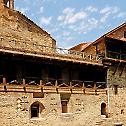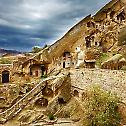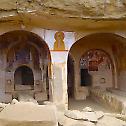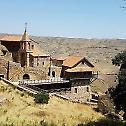Restoration of Georgia’s David Gareja monastery complex completed
Restoration work on Georgia’s famous David Gareja monastic complex and tourism infrastructure, underway since September 2015, has come to an end, reports News-Georgia.
As previously reported by Georgia Today, the restoration was carried out by the Municipal Development Fund sector of the Ministry of Regional Development and Infrastructure, with financial support from the World Bank and Georgian government. The cost exceeded 1.5 million lari (approx. $625,000).
The project provided water, sewage and a power supply network, renovations of the cell facades in the monastery complex, landscaping the monastery surroundings and the making of a visitor center with parking.
“The restoration project will contribute to the preservation of memorials of cultural heritage and the development of the tourism infrastructure. Thirty local residents were involved in the work,” the Municipal Development Fund reports.
The David Gareji monastic complex consists of about 20 monasteries carved into the rocks and covering the territory of three Georgian regions—Gardabani, Signagi, and Signagi. The complex, stretching for 15 miles, is a favorite of both locals and foreign tourists. The St. David Lavra is located 37 miles southeast of Tbilisi, along the Georgian-Azerbaijani border, dividing the complex into two parts.
The history of the complex begins in the 6th century, when one of the 13 Syrian fathers named David dwelt in a cave of Gareja on the slopes of a small canyon and soon founded the first monastery, which later turned into the Lavra of St. David. The complex was listed among the 17 most beautiful places in the world by National Geographic in November 2016,
For its size and historical significance, David Gareja occupies a special place in Georgian history. There is a tradition that three visits to the Gareja desert are equal to a pilgrimage to Jerusalem.
Source: Orthochristian.com










